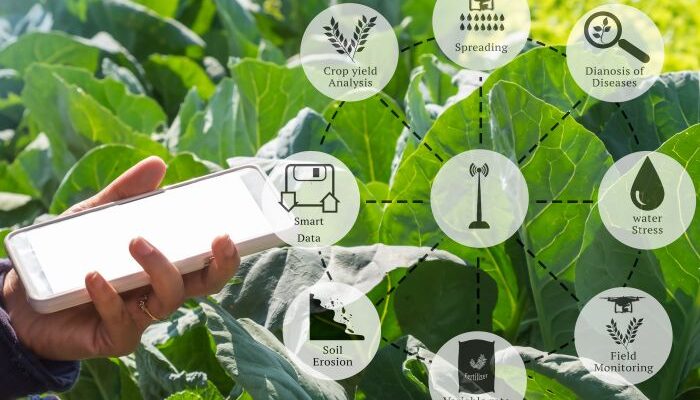The agricultural ecosystem is unquestionably the largest source of livelihood in India. Almost 70 per cent of its rural population is dependent on agriculture as their primary source of sustenance. However, even after about 75 years of independence, our farmers are facing numerous challenges like good quality seeds, costly fertilisers, lack of manures, uncertain weather conditions, lack of proper irrigation system, insufficient mechanisation, soil erosion, absence of sound marketing facilities, inadequate storage facilities and transportation, and most of all dearth of capital inputs.
But the good news is that, like every other sector, technological advancement in agriculture has paved the way for farmers and other stakeholders to overcome these challenges and more. The advent of agritech platforms is creating revolutionary ripples in the Indian agricultural ecosystem, making it possible for farmers to combine hard work with smart approaches. However, there’s still a huge gap between these cutting-edge technologies to become familiar with farmers. Naturally, this begs the question: How can new-age agritech platforms introduce farmer-oriented services to boost modern farming?
Against this backdrop, here are 4 key ways agritech platforms can become more user-friendly for farmers
1. Farmer-friendly mobile applications
A recent Deloitte report suggested that the demand for smartphones will rapidly increase in the Indian rural and urban markets by 2026 at a CAGR of 6 per cent and 2.5 per cent respectively. Undoubtedly, smartphones are one of the basic yet smartest ways for agritech platforms to connect farmers with modernistic technologies. By leveraging mobile applications, these platforms enable farmers (sellers) and buyers to directly facilitate trades without any middlemen. This brings total transparency and a chance for farmers to get the actual price of their yields without a third party taking a large portion as commission. These applications also provide a secure payment gateway to ensure the entire process is iron-clad.
2. Targeting affordability for all
Considering a large number of farmers belong to rural India, affordability to avail of best-in-class resources is a massive challenge for them. At this juncture, emerging agritech platforms are proving pivotal for their development. By providing low-cost agricultural inputs like fertilisers, herbicides and seeds, agritech platforms can help farmers boost their crop yield. Similarly, these platforms can also offer affordable or on-rent agricultural equipment like sickle and cultivators to reduce manual labour and improve efficiency.
3. Uncomplicated informative techniques
Between agritech platforms and farmers, the primary stakeholders of the agricultural ecosystem, the number one challenge is the ease of communication. While agritech platforms are embedded with modernistic technologies, they cannot communicate the same to the farmers. So, to address this need-gap, agritech platforms should introduce uncomplicated techniques to make farmers understand the importance and advantages of smart agriculture technologies. By empowering farmers with adequate knowledge about agricultural technologies and practices, these platforms can enhance their engagement and effectively resolve the day-to-day farming challenges.
4. Leveraging social media for better engagement
According to Statista, a Germany-based company, India had 580 million social media users in 2020. This number has significantly risen since the world went through a global pandemic amidst multiple lockdowns. But, social media, the easiest, convenient and immediate form of digital communication, can play an important role in agritech platforms trying to find common ground for connecting with farmers. By leveraging the interactive interface of social media channels, agritech platforms can create a one-stop-destination for niche agricultural communities to get reliable suggestions from industry experts. This will be like their immediate social group but only more dependable, upgraded and full of modern agritech knowledge.
In a nutshell
A 2019 NASSCOM report highlighted that Indian agritech businesses are mushrooming at a year-on-year rate of 25 per cent. These businesses are crucial for the sustainability, profitability and growth of the 90 to 150 million Indian farmers. However, until and unless agritech platforms start giving importance to user-friendly approaches instead of just innovation, it will be difficult for farmers and agritech to grow together.
Therefore, agritech platforms are advised to heed the aforementioned tips and create more farmer-oriented platforms that work from the ground up to ensure the holistic development of the agricultural sector.
(Amith Agarwal is the Co-founder & CEO of agritech startup, AgriBazaar. The views expressed in the article are author’s own. Agriculture Post doesn’t assume any responsibility or liability for the same.)




